| |
|
Leica M9 Digital Rangefinder Camera - Page 3
Index of Thorsten Overgaard's user review pages on Leica M9, Leica M9-P, Leica M-E, Leica M9 Monochrom, Leica M10, Leica M10-P, Leica M10-D, Leica M10-R, Leica M10 Monohcrom, Leica M11, Leica M11-D, Leica M 240, Leica M-D 262, Leica M Monochrom 246, Leica SL, Leica SL2, Leica SL2-S, Leica SL3, Leica SL3-S as well as Leica TL2, Leica CL, Leica Q, Leica Q2, Leica Q2 Monochrom, Leica Q3 and Leica Q3 43:
The Leica M9 at work
By: Thorsten Overgaard
Some might consider this the "Leica M9 Horror Movie" considering it was one of the first made Leica M9 cameras that went inside a big dusty owen just five days after the release of the Leica M9. I was covering a company cleaning out sand in a water supply factory the day before, and they asked if I could cover them cleaning out on an oil factory the next day as well. Sure!
Leica M9 goes to work from Thorsten Overgaard on Vimeo.
.
Covering Jydsk KLOAK Service Ltd using their 6,000 cubic metre an hour vaacum cleaner to clean out one of the four big owens. This is done once a year, and I thought I might get some interesting shots from the inside. 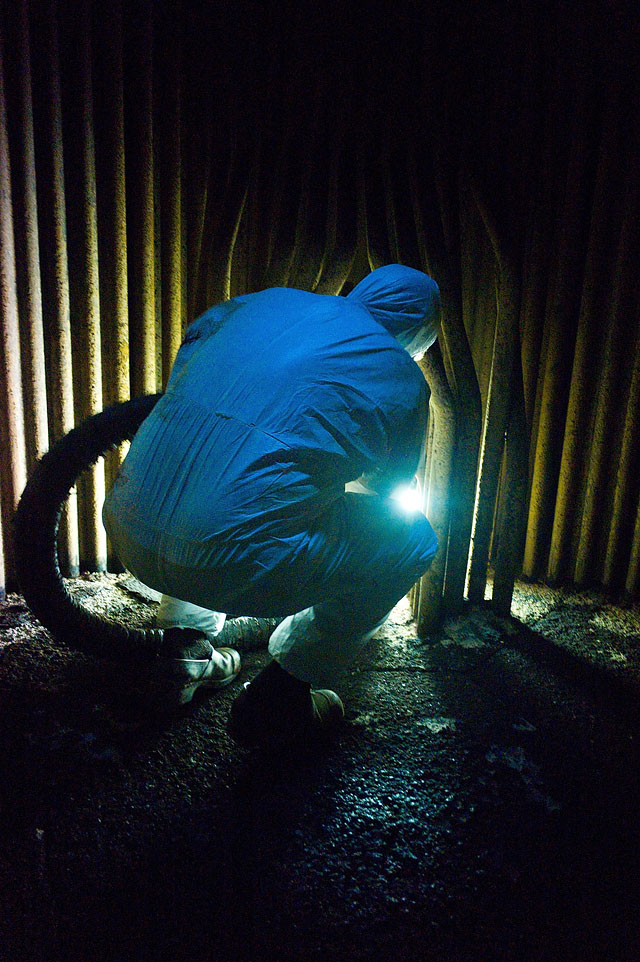
Inside the owen with the workmen. Leica M9 with 21mm Super-Angulon-M f/3.4, 1600 ISO.
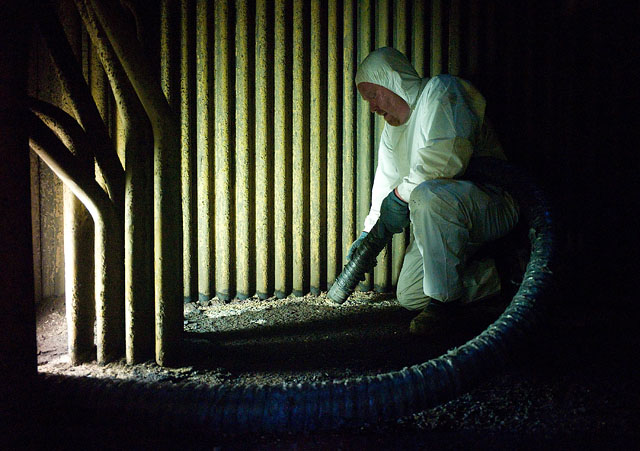
This one has a nice balance and will work well in a magazine. Leica M9 with 21mm Super-Angulon-M f/3.4, 1600 ISO.
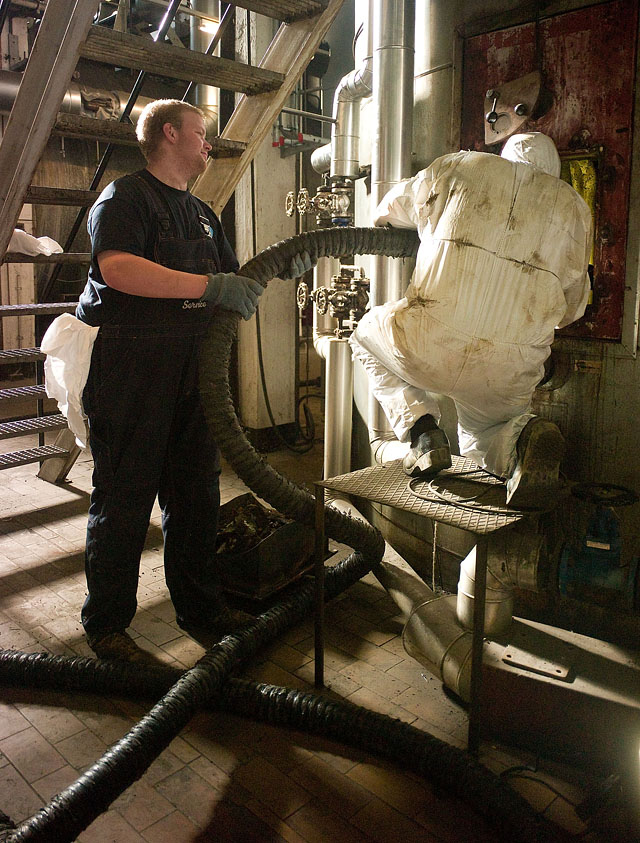
Coming out again. Leica M9 with 35mm Summicron-M f/2.0, 1600 ISO.
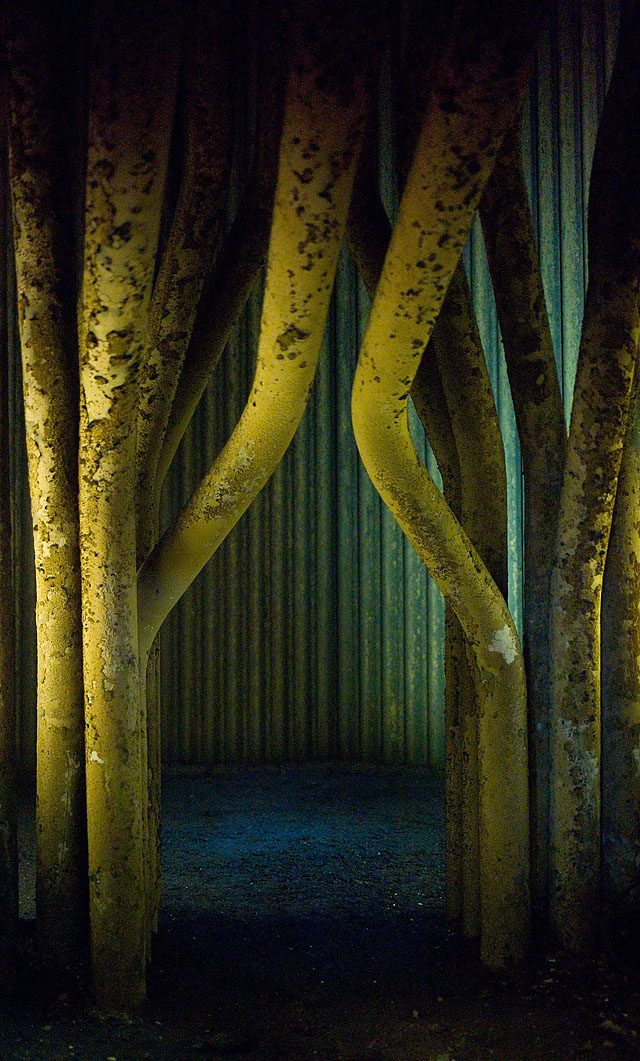
A look into the owen from the maintenance door. Leica M9 with 21mm Super-Angulon-M f/3.4, 1600 ISO.

Going a little artistic in the oil factory ... a pump from probably around 1950. Leica M9 with 21mm Super-Angulon-M f/3.4, 1600 ISO.
Advertisment:

Dust, oil, reain, snow and the Leica M9
In general I don't have considerations as to what equipment can experience. I work in rain, snow, dust, masses of people, on sandy beaches or whatever - and never really have any problems in doing so. The baseplate of my M9 looks well used, but apart from that, there has been no dust problems on the sensor, and the oil on the camera got off pretty easily.
Here's some shots from the water supply the day before: 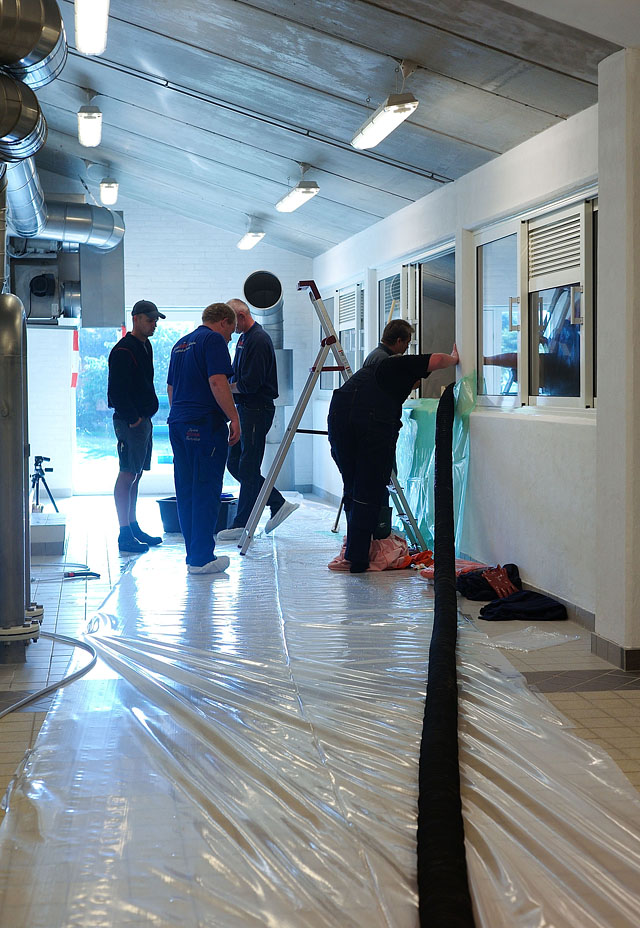
Leica M9 with 50mm Summicron-M f/2.0, 400 ISO.
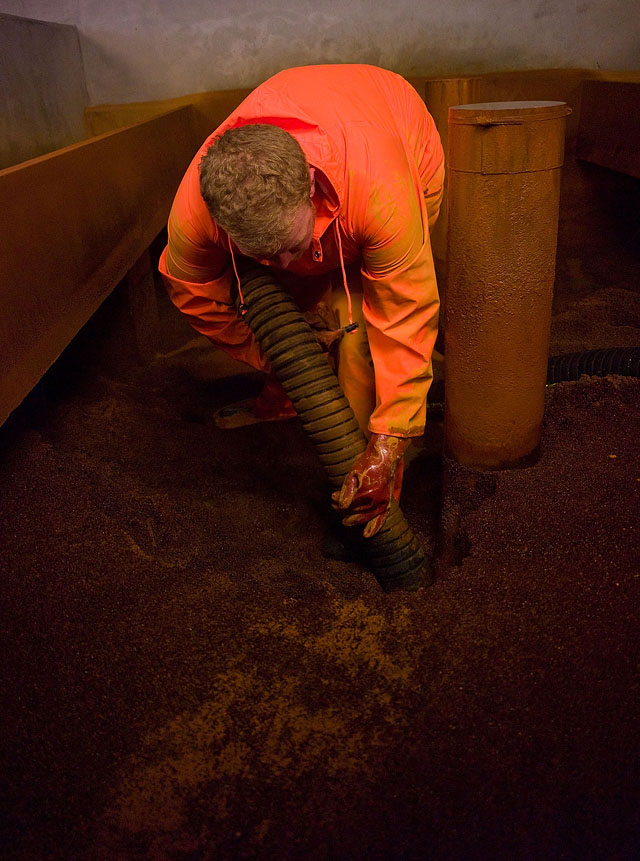
This was as far as I got - an arm inside with the camera (due to infection risk everything had to be very clean. Had I dropped my camera into the sand it would have closed down the water supply for weeks). Leica M9 with 50mm Super-Angulon-M f/3.4, 800 ISO.
The sand clean out ochre of the water, and as it does, the sand become redish orange and grow in size. So once in a while they have to remove some sand. Here they are removing 60 cm (2 feet).

Workman portrait. Some might argue that the skin tones are a big red here, but I guarantee he looked a bit cooked (you can see how much red and orange I took out from the color of the suit). Leica M9 with 50mm Summicron-M f/2.0, 400 ISO.
 Three hours of working inside a plastic suit. Leica M9 with 50mm Summicron-M f/2.0, 400 ISO. Three hours of working inside a plastic suit. Leica M9 with 50mm Summicron-M f/2.0, 400 ISO.
Anyways, all this is for some articles in water supply magazines and for their own promotion. Normally I would probably have used a Leica Digilux 2 for a day like this, but having just gotten the Leica M9 it of course had to go on a field trip. It's an extremely versatile camera and I had use of the higher ISO. I didn't know we would be working inside an owen when I left in the morning.

CONTINUES ON PAGE 4 ---> Index of Thorsten Overgaard's user review pages on Leica M9, Leica M9-P, Leica M-E, Leica M9 Monochrom, Leica M10, Leica M10-P, Leica M10-D, Leica M10-R, Leica M10 Monohcrom, Leica M11, Leica M11-D, Leica M 240, Leica M-D 262, Leica M Monochrom 246, Leica SL, Leica SL2, Leica SL2-S, Leica SL3, Leica SL3-S as well as Leica TL2, Leica CL, Leica Q, Leica Q2, Leica Q2 Monochrom, Leica Q3 and Leica Q3 43:
As always, feel free to e-mail me at thorsten@overgaard.dk with suggestions, ideas and questions. |
![]()
